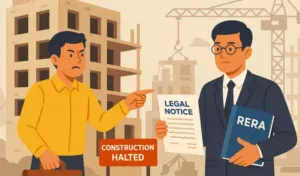In this article we have explained Recent Amendments to Indian Land Acquisition Laws
Introduction to Indian Land Acquisition Reforms
Land acquisition in India has always been a contentious issue, given its direct impact on various socio-economic and developmental aspects. Recognizing the need for a balanced approach that ensures both development and justice for landowners, the Indian government has introduced several amendments to its land acquisition laws. These reforms aim to streamline the process, making it more transparent and fair for all parties involved.
Understanding the Land Acquisition, Rehabilitation, and Resettlement Act (LARR), 2013
The Land Acquisition, Rehabilitation, and Resettlement Act (LARR), 2013, marked a significant shift in the legal framework governing land acquisition in India. It replaced the colonial-era Land Acquisition Act of 1894, incorporating provisions for compensation, rehabilitation, and resettlement of affected individuals. The LARR Act emphasizes consent, social impact assessment, and higher compensation, ensuring that the rights of landowners and affected parties are protected.
Key Features of the LARR Act, 2013
- Consent Requirement: For private projects, consent from 80% of the affected families is mandatory, and for public-private partnership projects, consent from 70% of the affected families is required.
- Social Impact Assessment (SIA): Mandatory SIA to evaluate the impact on affected families and calculate social costs.
- Compensation and Rehabilitation: The Act provides for compensation up to four times the market value in rural areas and two times in urban areas, along with rehabilitation and resettlement benefits.
Recent Amendments to Indian Land Acquisition Laws: An Overview
Despite the progressive stance of the LARR Act, 2013, several amendments have been proposed and implemented to address practical challenges and ensure the smoother execution of development projects.
Major Amendments and Their Rationale
- Exemption from SIA and Consent: Certain amendments propose exemptions from the SIA and consent clauses for projects related to defense, rural infrastructure, affordable housing, and industrial corridors. This is aimed at expediting projects of national importance and public utility.
- Changes in Compensation and Rehabilitation: Amendments have sought to clarify and sometimes enhance the compensation and rehabilitation measures, ensuring more equitable outcomes for affected families.
- Simplification of Procedures: Efforts have been made to simplify procedural requirements, reducing the time frame for the acquisition process and making it more efficient.
Criticisms and Controversies
While the amendments aim to facilitate development, they have sparked significant debate. Critics argue that exemptions from SIA and consent requirements might undermine the rights of landowners and affected communities. There’s an ongoing dialogue between the government, activists, and other stakeholders to find a balanced approach.
The Way Forward: Balancing Development and Rights
The recent amendments to Indian land acquisition laws reflect an ongoing effort to balance the imperative of development with the need to protect the rights of landowners and affected communities. While the reforms have streamlined the process, the challenge lies in implementing these laws in a manner that truly balances development needs with social justice.
Future Prospects
The Indian government continues to refine its approach to land acquisition, seeking to incorporate feedback from various stakeholders. The focus is on ensuring transparency, fairness, and efficiency in the land acquisition process, aiming for a model that serves as a benchmark for sustainable development and social equity.
Conclusion: Summary of Amendments to Indian Land Acquisition Laws
The amendments to the Indian Land Acquisition Laws, particularly within the framework of the LARR Act, 2013, represent a significant evolution in the legal landscape governing land acquisition. By introducing mechanisms for consent, social impact assessments, and enhanced compensation and rehabilitation packages, these reforms aim to ensure a more equitable process. However, the journey towards a completely balanced and just land acquisition policy continues, with the government and stakeholders actively engaged in refining and improving the existing laws.
FAQ on Recent Amendments to Indian Land Acquisition Laws
- What is the Land Acquisition, Rehabilitation and Resettlement Act (LARR), 2013?
- The LARR Act, 2013, is legislation in India that aims to make the process of land acquisition fair, transparent, and beneficial for the landowners while ensuring that the land can be acquired for industrialization, development, and infrastructure projects.
- How does the LARR Act, 2013, differ from the Land Acquisition Act of 1894?
- The LARR Act, 2013, introduces provisions for consent, social impact assessments, and higher compensation, focusing on the welfare of affected families, unlike the 1894 Act, which lacked such considerations.
- What is meant by ‘consent’ in the context of land acquisition under LARR Act, 2013?
- ‘Consent’ refers to the mandatory approval required from 80% of affected families for private projects and 70% for public-private partnership projects before land can be acquired.
- What is a Social Impact Assessment (SIA)?
- An SIA is a study conducted to evaluate the impact of the land acquisition on the affected families, including the social costs and benefits of the project.
- Are there any exemptions from the SIA and consent requirements?
- Yes, amendments have been proposed to exempt certain projects related to defense, rural infrastructure, affordable housing, and industrial corridors from SIA and consent requirements to expedite development.
- How is compensation calculated under the LARR Act, 2013?
- Compensation is calculated up to four times the market value of the land in rural areas and two times in urban areas, considering various factors including the urgency of acquisition and the land’s potential future value.
- What are the rehabilitation and resettlement benefits under the LARR Act?
- Benefits include employment opportunities for the affected families, housing, monetary compensation, and other entitlements to ensure their livelihoods are not adversely affected.
- Can landowners refuse to sell their land under the LARR Act, 2013?
- Yes, if the mandatory consent percentage is not met for private or public-private partnership projects, landowners can refuse to sell their land.
- What happens if land acquired under LARR Act, 2013, is not used for the purpose it was acquired for?
- If the land is not used within five years of acquisition, it must be returned to the original owners or the land bank.
- Is there a provision for appeal against the decisions made under the LARR Act?
- Yes, affected parties can appeal to the High Court against decisions regarding compensation, rehabilitation, and resettlement.
- How do recent amendments affect the compensation for land acquisition?
- Some amendments clarify and enhance the compensation measures, ensuring more equitable outcomes for affected families.
- What are the criticisms of the recent amendments to the LARR Act?
- Critics argue that exemptions from SIA and consent could undermine the rights and welfare of landowners and affected communities.
- How do the amendments propose to simplify the acquisition process?
- By streamlining procedural requirements and reducing the timeframe for the acquisition process, making it more efficient.
- Do the amendments affect all types of land acquisition projects?
- The amendments primarily target projects related to defense, rural infrastructure, affordable housing, and industrial corridors.
- What is the role of state governments in the land acquisition process under the LARR Act?
- State governments play a crucial role in implementing the Act, including conducting SIAs, determining compensation, and overseeing rehabilitation and resettlement efforts.
- How does the Act ensure transparency in the land acquisition process?
- Through mandatory SIAs, consent requirements, and public hearings, the Act ensures a transparent process where affected parties are informed and involved.
- What impact do the amendments have on rural and urban landowners?
- The amendments aim to provide fair compensation and rehabilitation benefits, impacting both rural and urban landowners positively by ensuring their rights are protected.
- Can the government acquire land for private companies under the LARR Act, 2013?
- Yes, but with the mandatory consent of the affected families and provisions for their rehabilitation and resettlement.
- What are the future prospects for land acquisition laws in India?
- Ongoing refinements and dialogue with stakeholders are expected to further balance development needs with social justice, aiming for a more equitable land acquisition policy.
- How do the amendments address the urgency of land acquisition for national projects?
- By providing exemptions from certain requirements for projects deemed of national importance, the amendments aim to facilitate quicker land acquisition.
- What is the significance of compensation being based on market value?
- Basing compensation on market value ensures that affected families receive a fair price for their land, reflecting its true economic value.
- Are there any specific provisions for Scheduled Castes and Scheduled Tribes under the LARR Act?
- Yes, there are additional provisions to protect the rights of Scheduled Castes and Scheduled Tribes, including ensuring land-for-land compensation where possible.
- How does the government plan to monitor the implementation of the LARR Act?
- The government has set up monitoring committees at various levels to oversee and ensure the proper implementation of the Act.
- What challenges are faced in the implementation of the LARR Act, 2013?
- Challenges include bureaucratic delays, differing state-level implementations, and balancing the interests of various stakeholders.
- How do recent amendments impact the timeline for land acquisition?
- The amendments aim to shorten the timeline for land acquisition by simplifying procedures and reducing bureaucratic steps.
- What measures are in place to ensure the resettlement of affected families?
- The Act mandates comprehensive resettlement packages, including housing, monetary compensation, and livelihood support to ensure families are not justify worse off.
- Can acquired land be sold to third parties by the acquiring entity?
- The land acquired cannot be sold to third parties without fulfilling the purposes for which it was acquired and adhering to the provisions of the Act.
- How do the amendments facilitate infrastructure development?
- By streamlining the acquisition process and providing exemptions for certain projects, the amendments facilitate quicker infrastructure development.
- What role do public hearings play in the land acquisition process?
- Public hearings allow for the participation of affected parties, ensuring their voices are heard and considered in the decision-making process.
-
Is there a provision for the periodic review of the LARR Act and its amendments?
- Yes, the government periodically reviews the Act and its implementation to ensure it meets its objectives and incorporates feedback from various stakeholders.












